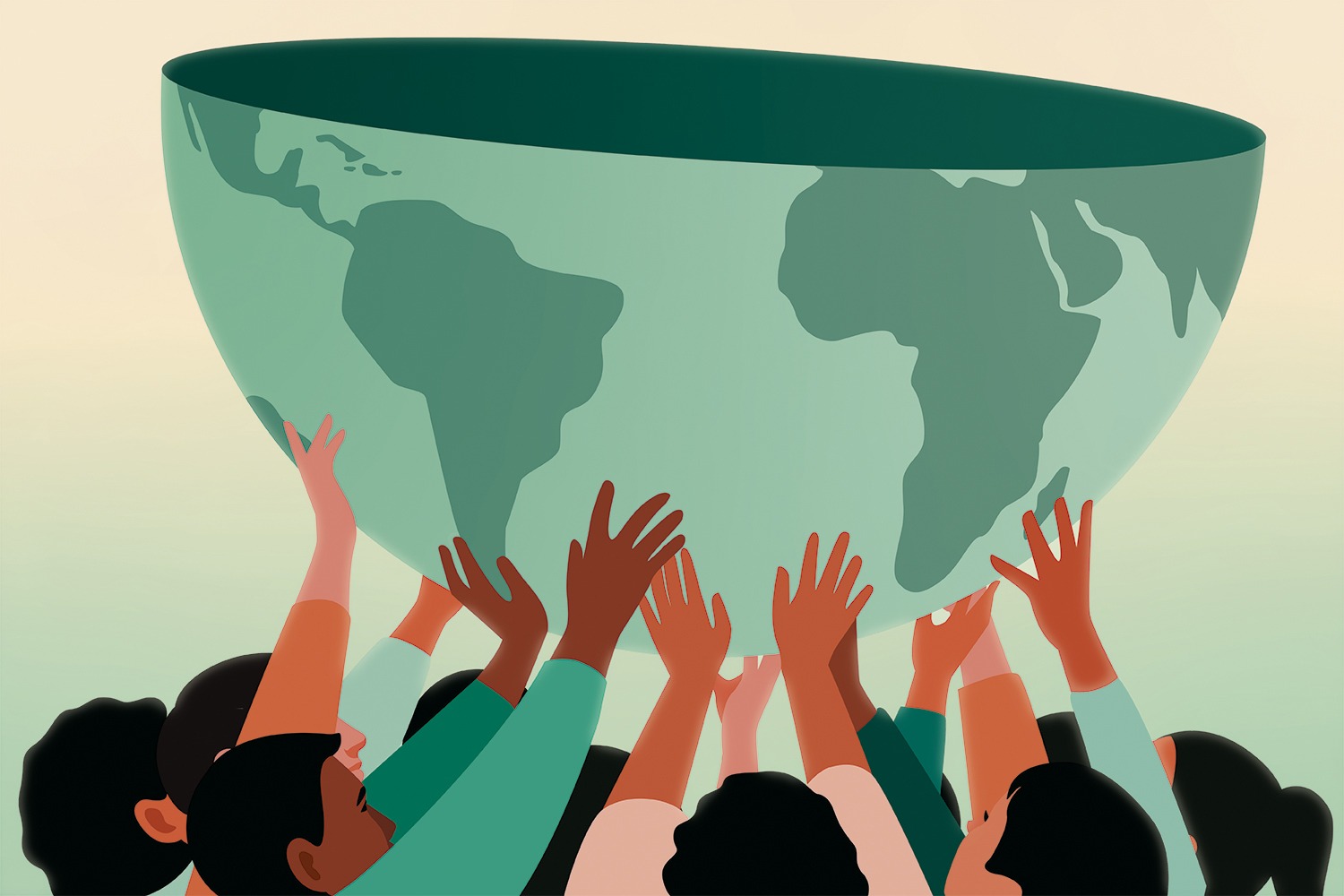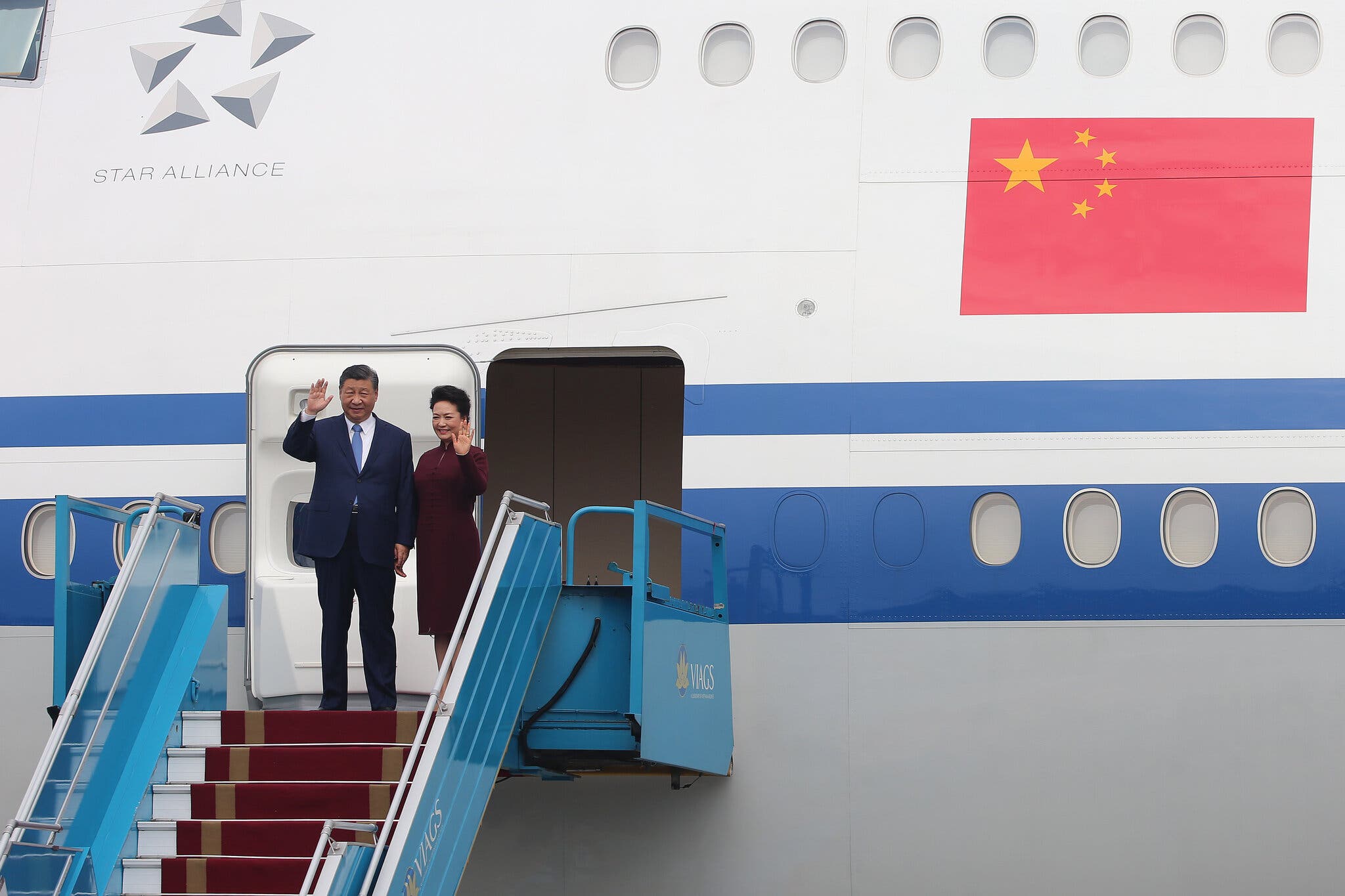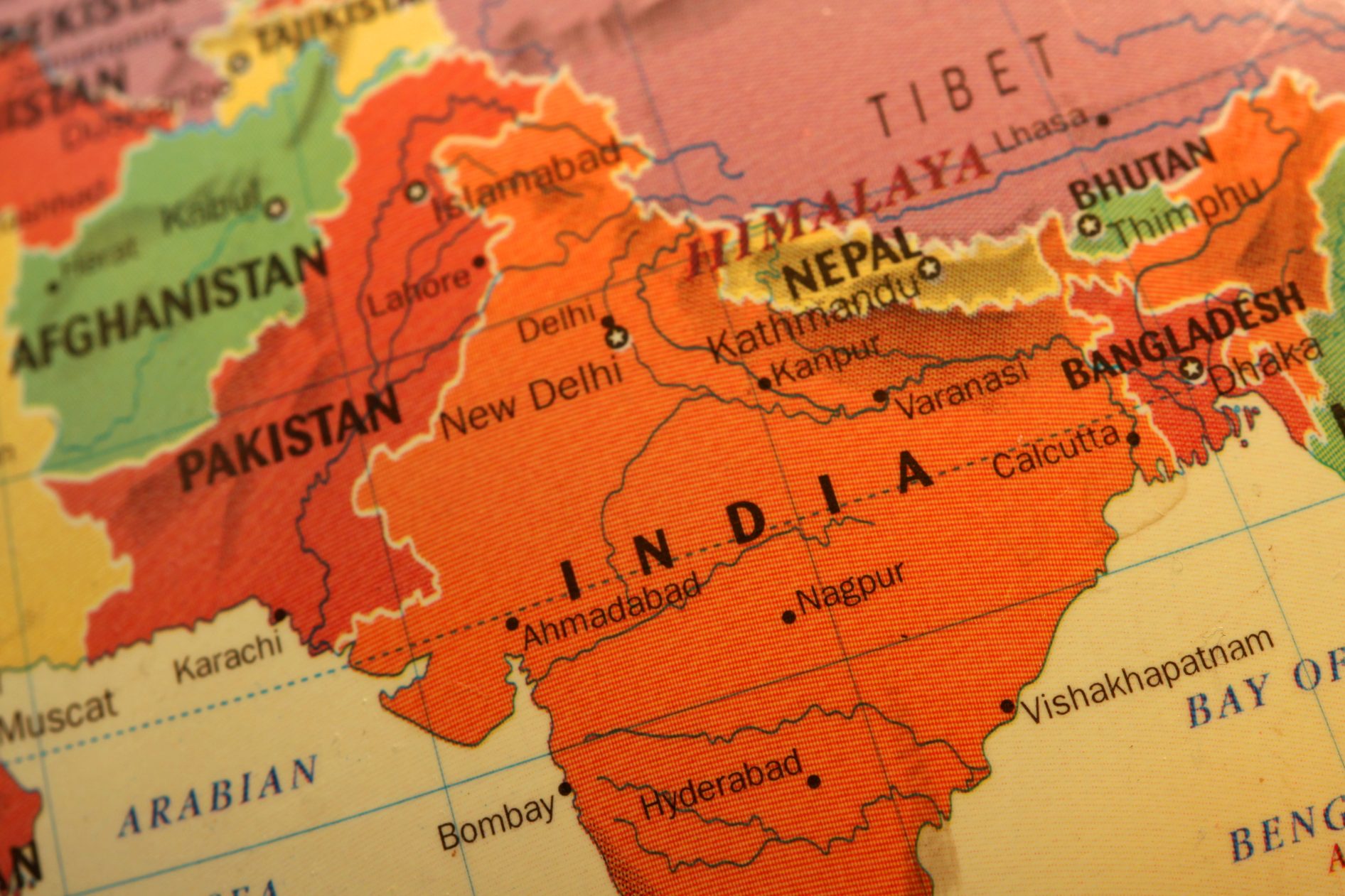Is There Such a Thing as a Global South?
FOREIGN POLICY
APLN member C. Raja Mohan wrote on the concept of global south, arguing that using the global south as a category and frame of reference makes it much harder to understand the complex realities of different countries and regions. The original post can be found on the FP website here.
We need to talk about the global south. Not about the 120-plus countries usually placed into that category, but about the idea itself—and the way in which it has gripped international discourse in recent years. Let us therefore ask a fundamental question: Is there such a thing as a global south?
Tossing more than half of humanity into a single bucket not only has deep analytical flaws. It is also an obstacle to serious engagement with the non-Western world, notwithstanding the seemingly good intentions of the pundits, politicians, and policymakers using the term. But don’t hold your breath for the idea to go away—the stakes in upholding the illusion of a collective non-Western world are too great, both in the West and among the rest.
The aggregation of the vast, diverse, and widely dispersed non-Western world in a single category with supposedly similar interests has become a convenient shorthand in debates over issues ranging from climate policy to the response to the COVID-19 pandemic to Russia’s war in Ukraine. As many non-Western countries line up against Israel at U.N. General Assembly votes, the idea that there is a global south at odds with a global north has acquired yet more traction.
Yet using the global south as a category and frame of reference makes it much harder to understand the complex realities of different countries and regions. Despite the term’s growing usage, the objective analytical flaws of the global south as a category come into sharp view as soon as you scratch even a little bit. What does China have in common with Peru? Qatar with Haiti? Thailand with Sierra Leone? Lumping countries such as these into a single category—and then defining this category as inherently different from a global north—is a barrier to understanding a complex world.
The global south is an intellectually elusive but emotionally rich term that captures many of the hopes for—and in some quarters, fears about—a more politically and economically equitable world. It arose from the post-colonial contestations between the West and the rest along multiple axes—developed versus developing, rich versus poor, powerful versus powerless. A commission led by former German Chancellor Willy Brandt codified the divide in a 1980 report, literally drawing a thick black line across a map of the world. The so-called Brandt Line has endured as way of thinking about the relationship between the West and the rest. After a period of hibernation in academia during the heyday of globalization in the 1990s and early 2000s, the idea of a global south has burst back into the mainstream international discourse in recent years.
The concept is thus old wine in a new bottle, standing in a long line of ideas and -isms growing out of Europe’s encounter with the rest of the world that began in earnest five centuries ago. In the 20th century, that encounter produced several transnational movements, groups, and ideologies: pan-Asianism, pan-Arabism, pan-Africanism, pan-Islamism, the Non-Aligned Movement, Third Worldism, and the G-77. Some of these were indigenous ideas, others—like Third Worldism—the product of Western academic elites. None survived a serious encounter with the real world.
These transcendent, anti-Western, and post-colonial ideologies inevitably ran into the forces of nationalism, which negated many of the supranational identities that their proponents sought to craft in the attempt to stand up to the West. Even at the regional level, any shared identities of religion and ethnicity could not paper over the multiple conflicts among various nationalisms. During the 1956 Suez Crisis, Pakistan’s then-Prime Minister Huseyn Suhrawardy dismissed Arab unity as “zero plus zero plus zero.” The problem of building Arab unity persists to this day.
Starkly divergent economic interests, development paths, resource endowments, and political traditions also belie the idea of a global south as a peer group. Indeed, many of the world’s conflicts today are between and within developing states. Despite the repeated efforts to shove them under the intellectual blanket of a supposed north-south antagonism, these inter- and intra-state conflicts continue to dominate the politics of the non-Western world.
In pursuing economic and security goals, non-Western elites have rarely had a problem joining hands with the West. Pakistan, anxious about India, joined U.S.-led Cold War alliances. India, worried about Chinese hegemony, today is teaming up with the United States. Vietnam, whose communist ideology is akin to China’s, is building a strategic partnership with the United States to enhance its autonomy vis-à-vis China’s behavior in the region.
On the economic front, it has never been easy for the so-called global south to construct a coalition against the West. The differences are too glaring. Five decades ago, the Arab oil embargo and formation of OPEC were seen as a blow by the Third World—that era’s equivalent of the term global south—against the West to get better prices for its commodities. However, it was challenging then and is even more challenging now to reconcile the contradictory interests of commodity producers and consumers within the non-Western world. Nothing makes life harder for people in developing countries not blessed with hydrocarbons than soaring prices.
Similarly, India’s and China’s economic relationships with, say, the Democratic Republic of Congo are not fundamentally different today from Europe’s or Japan’s—industrial companies need copper, cobalt, and other inputs. On climate policy, too, there are deep global divides. Some states are on the side of the United States and Europe on a fossil fuel phaseout. Most developing nations need more energy to raise their people from poverty, and many of them, such as India, want to persist with coal and other fossil fuels. Meanwhile, oil-producing countries in the Middle East, Africa, and Latin America are not ready to abandon their main source of wealth.
Divergent development paths within the so-called global south have also produced very different relationships with rich countries. East Asia prospered by finding common ground with Western capital to rapidly raise its people’s living standards. South Korea has joined the ranks of the rich countries, and China is increasingly seen as an economic and technological peer of the West.
Indeed, the rise of China to become the world’s second-largest economy is in a class of its own. Whatever the nature of the conflict between China and the West, there is no disputing that the former’s rise was actively enabled by the latter. As China quarrels with the West, India has taken a page from China’s textbook and is eagerly courting Western capital and technology in hopes of leveraging them for rapid growth.
Which brings us to another analytical flaw: the global south’s fluid boundaries and vague criteria for inclusion. China, a junior partner of the Soviet Union in the 20th century, is now the senior partner to Russia—and Beijing’s claim to still be a developing nation is dubious at best. As China backs Russia’s war in Ukraine and NATO is reaching out to Asia, the unfolding integration of the European and Asian security spheres—often actively driven by Asian nations—further undermines the idea of the non-Western world as a passive adjunct to a global north. A new batch of minilateral security partnerships easily crosses the supposed north-south divide. Instead of staying in the category pundits have assigned to them, rising powers on various points of the compass are increasingly contributing to the balance of power among the traditional security actors.
Since the concept of a global south first gained ground, differentiation within the developing world has only sharpened. The Gulf States have acquired enormous wealth; Dubai now ranks as a major financial center alongside New York, London, Shanghai, Hong Kong, and Singapore. Gulf capital is driving economic growth across the Middle East and Africa. It is also giving confidence to the Gulf kingdoms to actively intervene in various internal and regional conflicts, such as in Yemen. Who can claim that interventionism in the so-called global south is only a Western custom?
Unethical fearmongering in the West exacerbates the analytical confusion created by the term global south. Irrational fear of the barbarians at the gate drives many in the West to yet another version of totalizing the non-Western world. In 2018, then-U.S. President Donald Trump put it more crudely when he referred to “shithole countries” while discussing immigration from Africa and Haiti. Also recall European Commissioner Josep Borrell’s worries about the non-Western jungle invading the European garden of prosperity and order. In uncomfortable ways, the conservative construction of a barbarian global south and the progressive construction emphasizing victimhood and Western guilt are two sides of the same reductive coin that lumps a vast, diverse swath of humanity into a single mental category.
For Western liberals, the construct of a global south is an easy means to signal empathy for the non-Western world. That empathy, however, is always tinged with not a little condescension. It denies agency to individual countries by treating them as one bloc, and usually presupposes that this bloc will advance a bouquet of Western liberal causes—from climate policy to visions of social justice—whether or not the countries so labeled actually espouse them. Although the empires have disappeared, the Western tendency on both the left and right is still to preach, judge, and punish.
Non-Western elites have their own reasons to espouse global southism. Blaming the West is always a good excuse for their failures, and posturing against the West has always been good politics. Both strategies are rooted in the postcolonial narrative of victimhood, and both ignore the extraordinary progress made in many parts of the non-Western world in the last few decades. They dismiss the growing capacity of the non-Western world to alter the terms of engagement with the West. China’s rise over the last three decades stands out as a dramatic example. India, despite its renewed rhetoric promoting the global south, has been negotiating terms of endearment with the West.
Much of the rhetoric on the global south founders on the shoals of trying to explain the rise of China, India, the Gulf States, the Asian tigers, and other non-Western powers that have acquired enormous clout to influence the regional and global order. Why, then, are Beijing and New Delhi championing the idea of a global south? Obviously, it’s part of a global battle for influence. For China, the rhetoric on the global south is about mobilizing the non-Western world in its strategic competition with the United States. India, in turn, is alarmed by China’s growing push into its neighborhood and is trying to reclaim its traditional political equities in the non-Western world.
But contrary to widespread Western perceptions, India—formerly a driving force behind the defunct Non-Aligned Movement—is not returning to its old playbook. As Indian External Affairs Minister Subrahmanyam Jaishankar has said, the traditional narrative that the West is the bad guy does not reflect the complex realities on the ground. Jaishankar was pointing to the concentration of global manufacturing in China and Beijing’s weaponization of its economic advantage. New Delhi’s competition for influence in Asia, Africa, and elsewhere is with Beijing, not Washington—which again explodes the construct of a global north-south divide.
Contrary to the image of helpless global south, even the smallest countries in the non-Western world recognize the current new room for maneuver. Unlike in the mid-20th century, when non-Western elites were largely driven by ideology, today they are practical. They are ready to make bilateral deals with Western partners, even as they espouse the notion of a collective southern cause whenever that framing suits them politically or financially.
With this debunking of such a popular term, I am probably fighting windmills. Despite my and others’ calls to retire the category global south, it is unlikely to disappear from the international relations vocabulary anytime soon. For many in the West, it is a way of othering the rest; for the chattering classes in the rest, it is a way of channeling deep reservoirs of resentment against continuing Western dominance. For new powers such as China and India, championing a so-called global south is a means to expand their global influence. But make no mistake: The use of such a broad, amorphous, overgeneralizing category obscures more than it reveals. It has little explanatory or predictive value in understanding our world.
Image: ANNA PARINI ILLUSTRATION FOR FOREIGN POLICY




